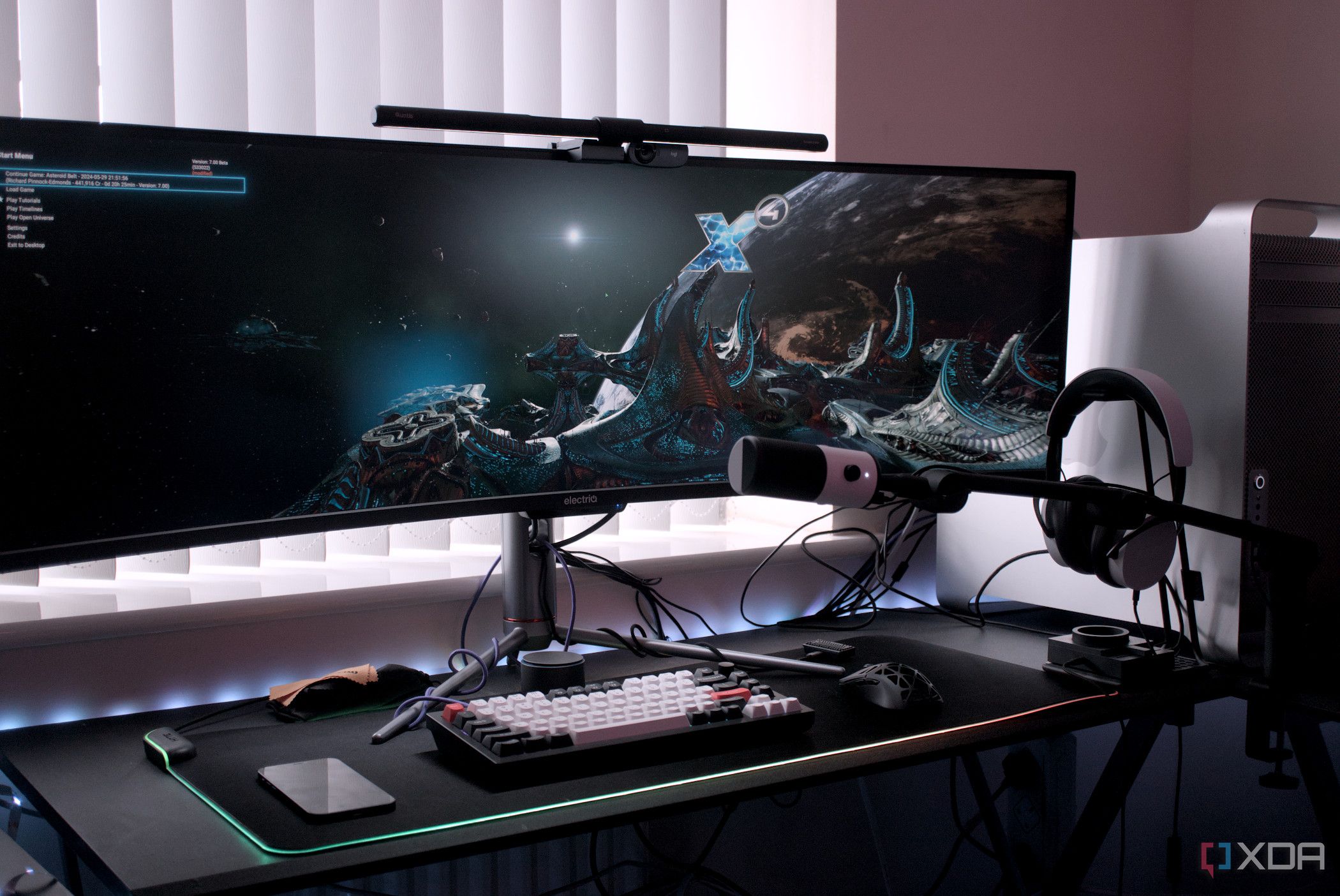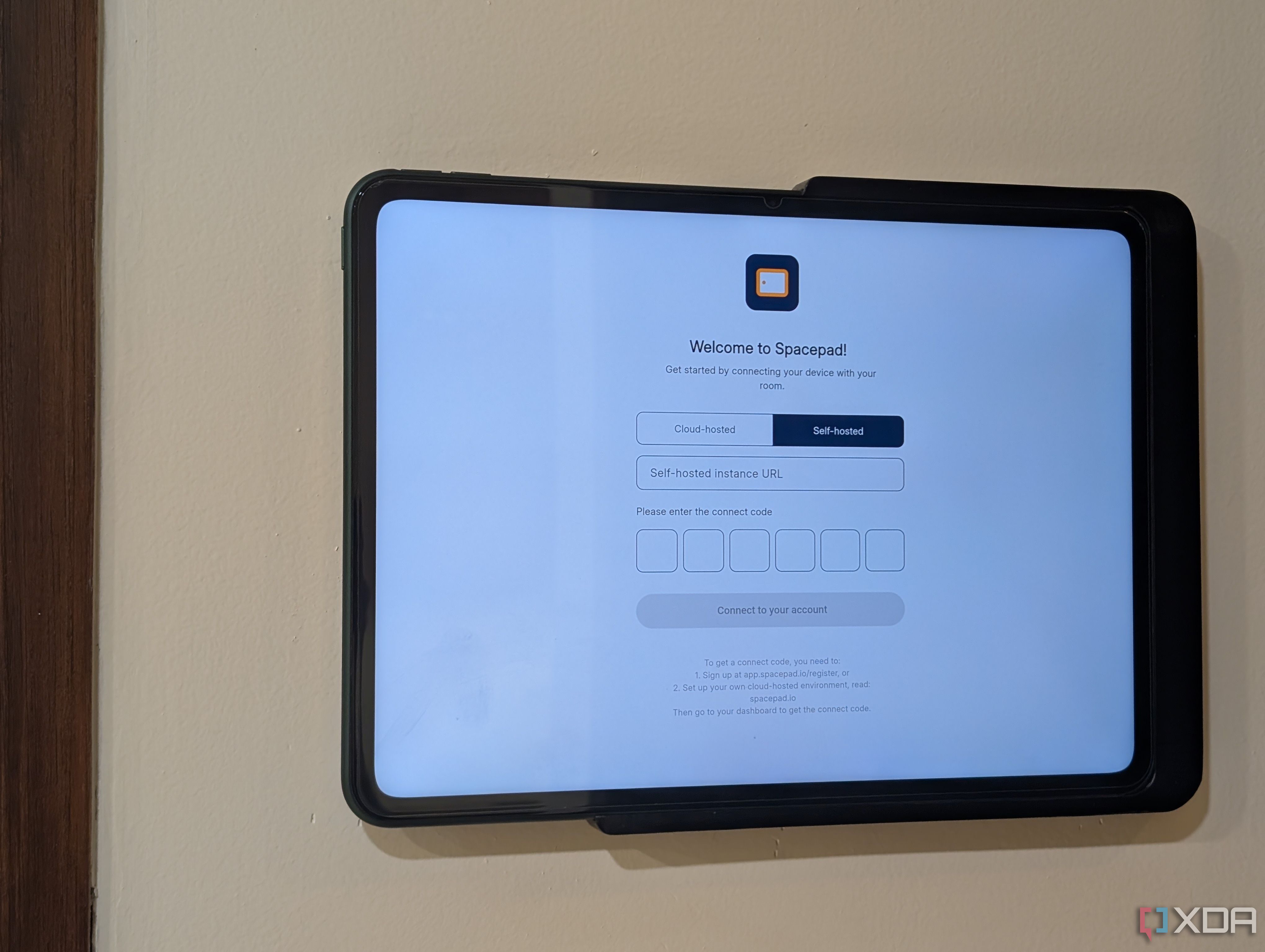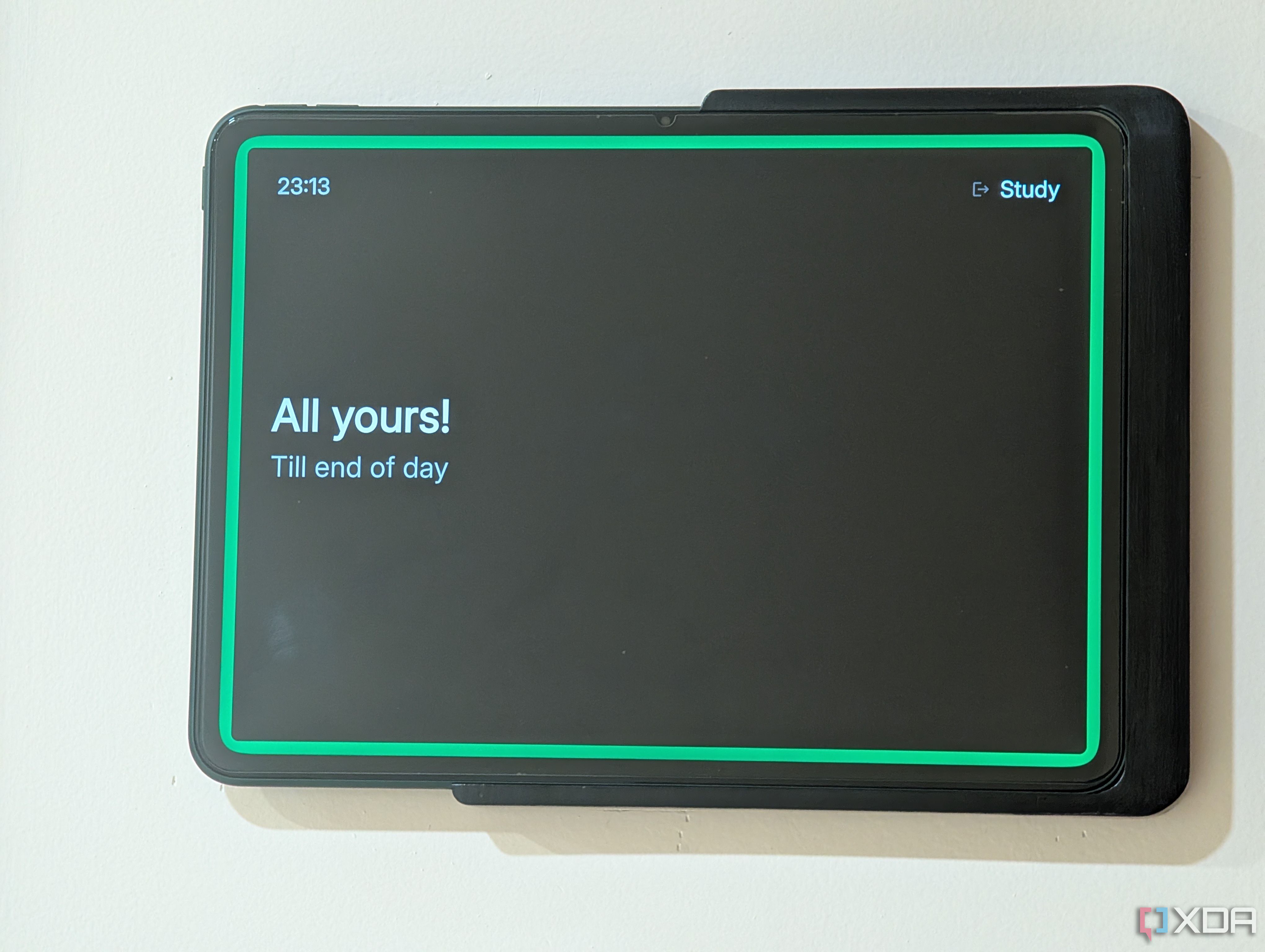Working from home has its perks — no commute, flexible hours, working in sweatpants — but it also comes with its own set of challenges. For me, the biggest one was something simple: getting the family to leave me alone during meetings when working from my home office.
No matter how many times I told my family I had an important call or meeting, someone would inevitably knock on the door, call out from the hallway, or just walk in mid-presentation. I needed a way to let people know when I was in a meeting, ideally without having to shout it every time.
That’s when I had the idea of mounting a display outside my home office as a meeting room display — something visual, something unmissable, something that could let everyone know, “In a meeting. Come back later.”

6 budget-friendly tips to create the best home office for work
Creating the home office of your dreams can help you get more done.
Rediscovering an Old Tablet
The perfect low-cost solution

While hunting for solutions, I remembered I had an old Android tablet collecting dust in a drawer. It wasn’t fast, but the screen still worked, it could connect to Wi-Fi, and it could still download apps. That was enough.
I figured I could turn it into a live status dashboard if I could find the right app. And if it could pull details from my work calendar and update automatically, that would be even better. After some searching, I found exactly what I needed — Spacepad, a self-hosted meeting room display app that works with Microsoft 365 and, soon, Google Workspace, personal calendars, and even CalDAV.
It looks clean, customizable, and lightweight. Best of all, it is free if you choose to self-host it.
Setting up Spacepad
Surprisingly simple setup
I’m not new to self-hosted tools, but I’m also not a full-time developer. Thankfully, Spacepad’s setup was straightforward. I already had a home server running Docker, so I cloned the GitHub repo and followed the instructions.
It took just a few edits to the .env file, mostly to set up permissions, but I had the app running locally within an hour. The interface runs on the companion app and is designed for wall-mounted displays, with big, easy-to-read text and clean visuals.
Once it was live, I opened the Spacepad app on the tablet and entered the local IP of my Spacepad instance. That was it. My personal meeting room display was up and running.
Mounting it outside my office
Visual cues that work

I stuck the tablet to the wall using a 3D-printed mount. It now lives right next to my office door, perfectly eye-level, with real-time updates on my availability. When I’m in a meeting, it says so. When I’m free, it shows what’s next. There is no guessing. There are no interruptions.
This small change made a big difference. Instead of reminding people not to disturb me, the tablet does it for me. Even if someone forgets I’m in a meeting, it’s hard to miss an oversized display outside my door, reminding me constantly. Here's the thing: there’s something about a glowing screen that people take more seriously than a sticky note. The visual cue is instant. Green means I’m free. Red means I’m on a call. It’s subtle but incredibly effective.
Spacepad pulls data directly from Microsoft 365, including calendar events and room availability. The calendar integration means I don’t need to input anything manually. It reflects my actual schedule in real time. And if you assign a room to your meeting invites like I do for my home office, it will display that room’s status too.
The display updates dynamically as my calendar changes. If a meeting gets moved or canceled, the tablet instantly reflects that. That level of automation means I can focus on my work, not on managing yet another app or device.
Because it’s self-hosted, I also have full control over the data. There are no subscriptions and limited tracking, as it is tied only to my Microsoft 365 account and has access to just my calendar.
A quiet win in my work-from-home chaos
Big gains from a small change
What surprised me most is how such a small change made such a big difference. Thanks to the tablet announcing loudly that I’m unavailable, interruptions have dropped to a minimum. It also adds a bit of structure to my work-from-home routine. It's easier to stay focused when I see my schedule laid out like that — no more losing track of time or scrambling between meetings.
And let’s be honest. If you’re one of those who hosts a home assistant tablet, you’ll agree that it just looks cool. A sleek digital panel outside your office door makes it feel like you’ve got your own meeting room, even if it’s just a spare bedroom.
Turning an old tablet into a meeting room display might not sound revolutionary, but for anyone working from home with frequent video calls, it can be a game-changer. With Spacepad, I got a professional-looking solution without spending a dime on new hardware or monthly fees.
If you’ve got a tablet lying around and a calendar that supports Microsoft 365, I highly recommend trying this. It’s a simple project that solves a real problem and might just earn you a few more moments of uninterrupted peace. Meanwhile, I’m waiting for the upcoming CalDAV and Google Calendar integration to hook it into my personal calendar too.
.png)










 English (US) ·
English (US) ·